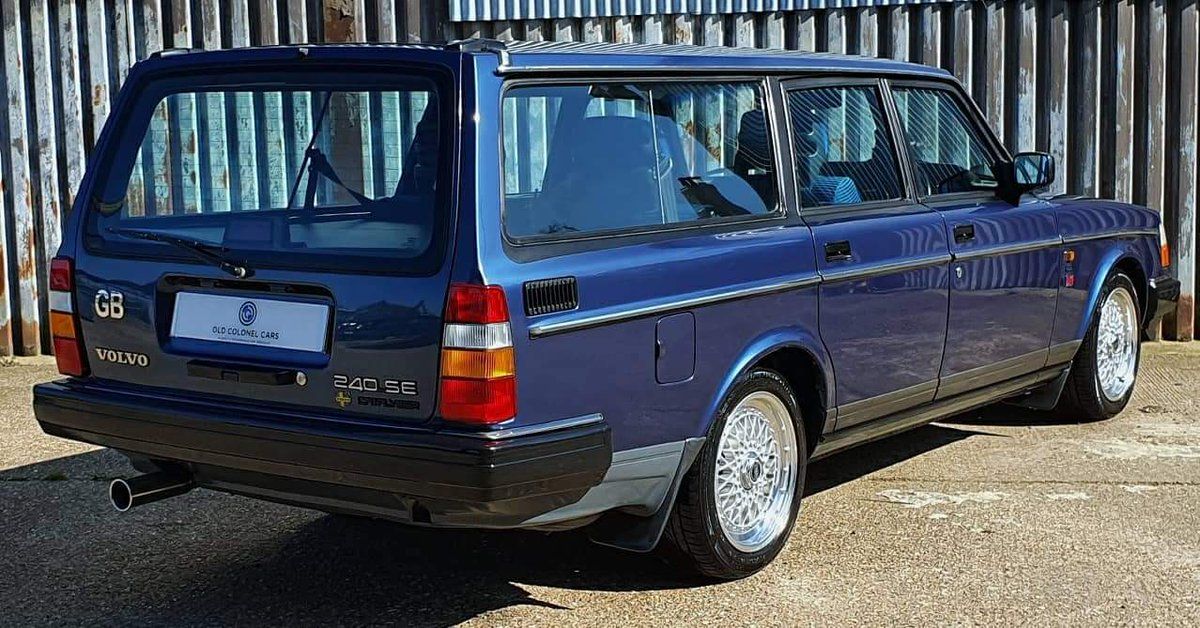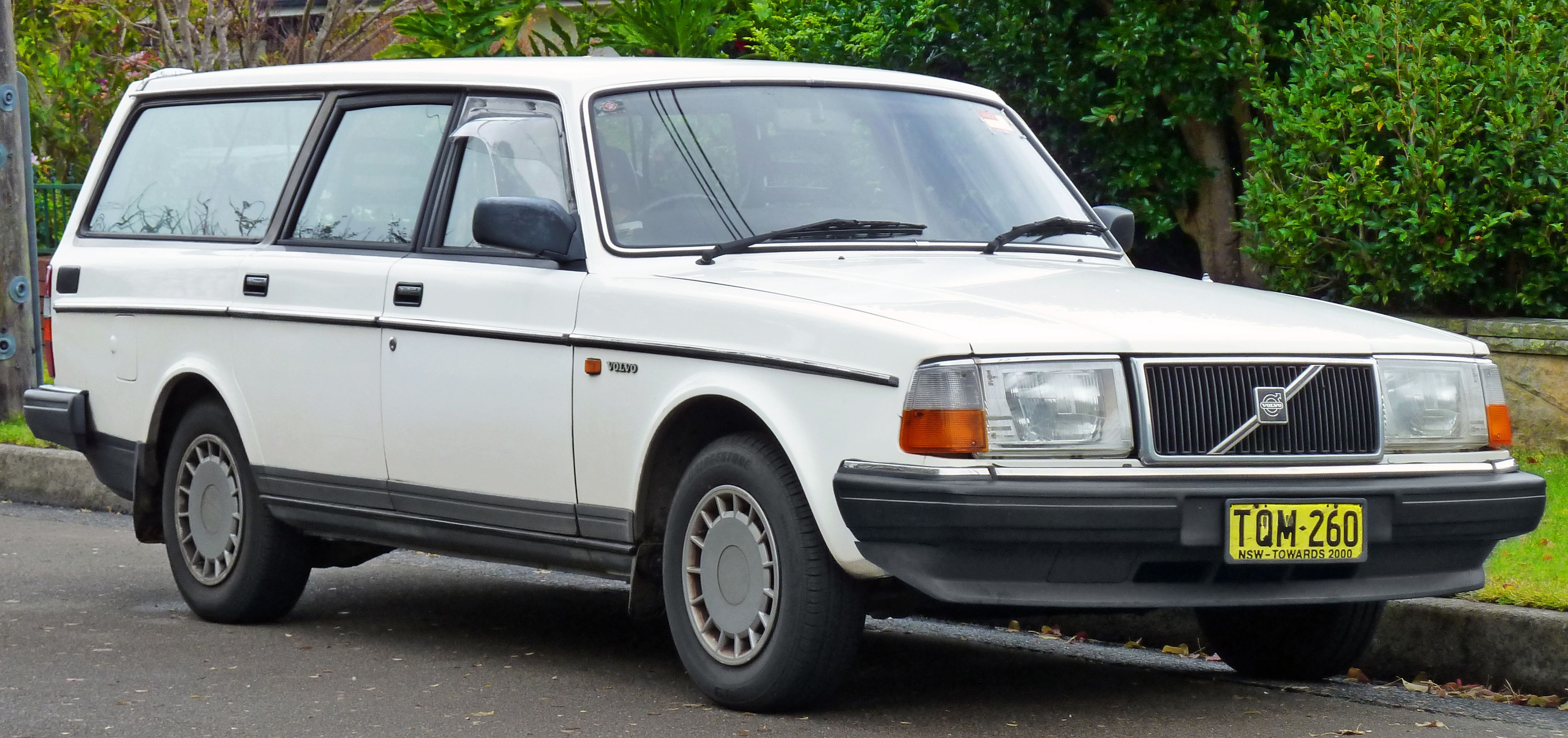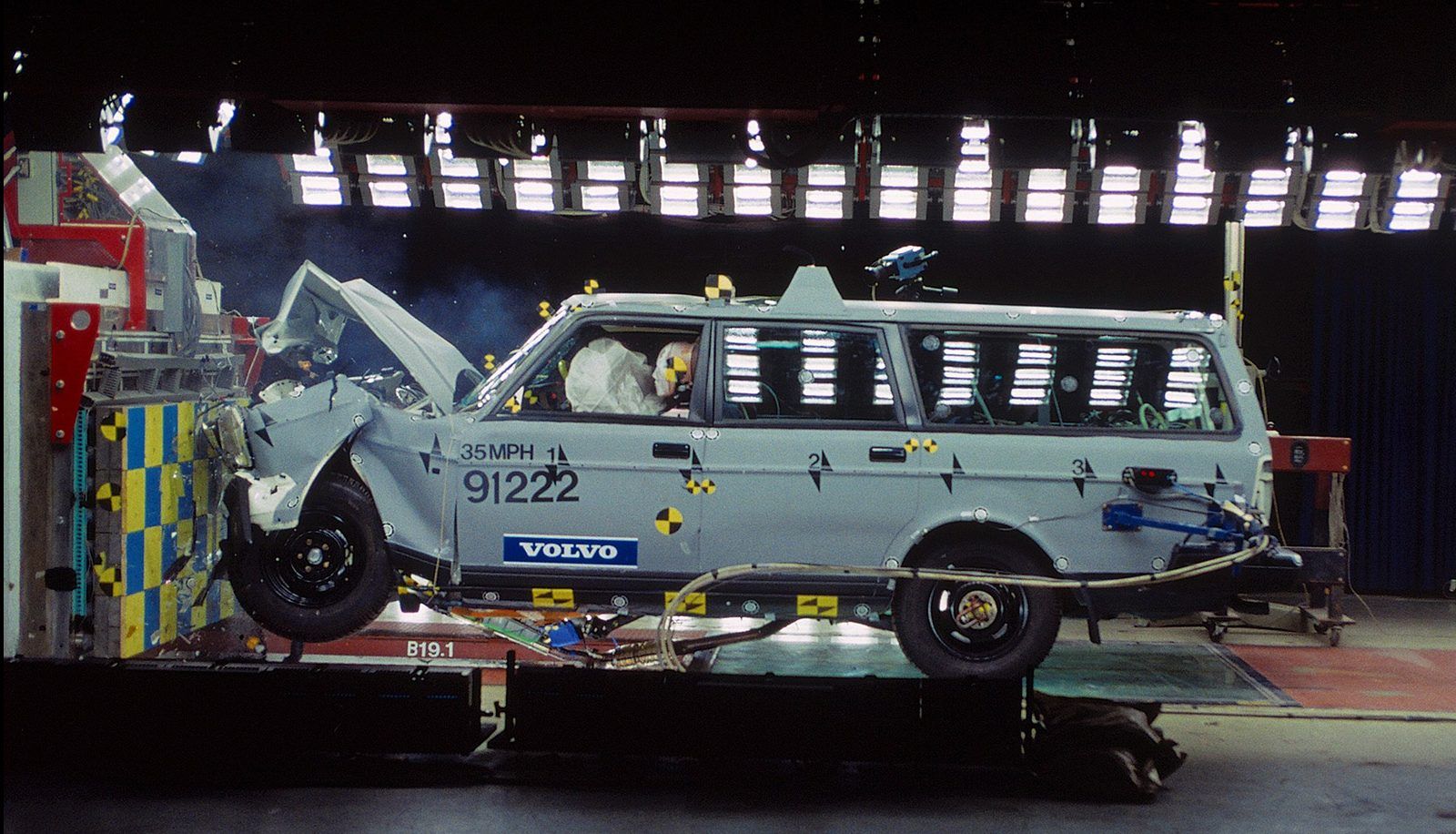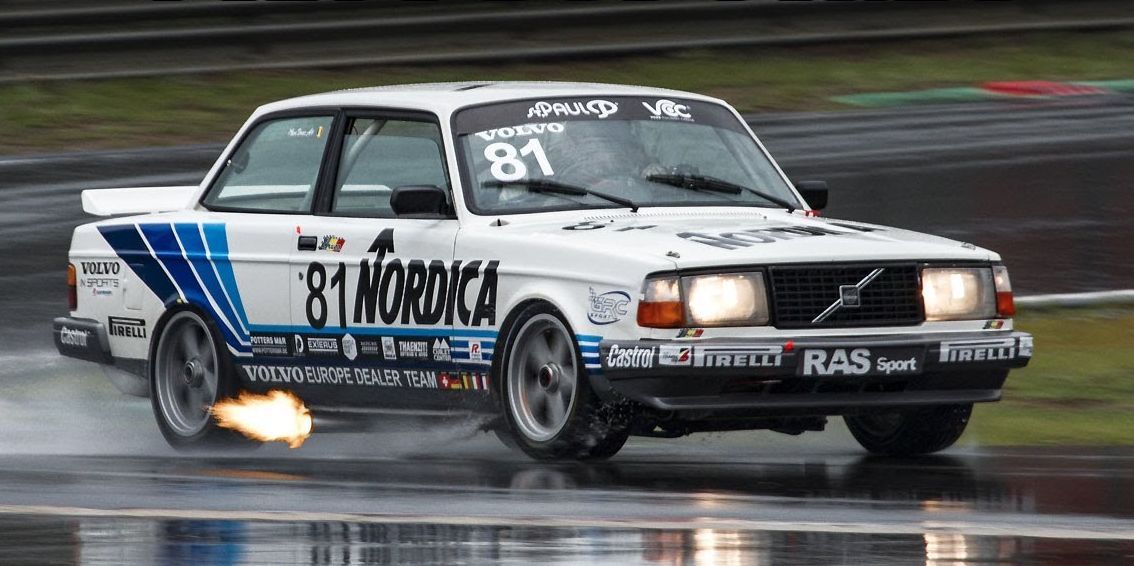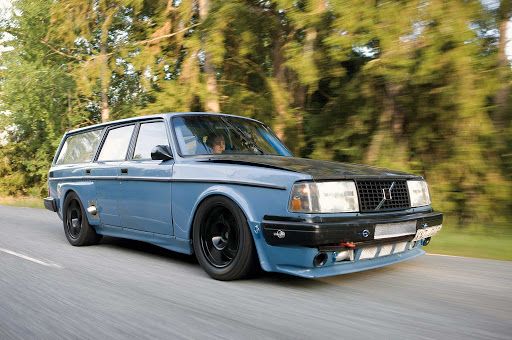Volvos are known best for their high safety ratings and reliability, but none are as iconic as the boxy wagons pumped out over the years: The 740, the 850 Turbo, and the V70. While that square shape has since simmered away, Volvo hasn't ditched the midsized family wagon yet, with a wide range of V60s and their top-of-the-line V90.
But let's go back to the start, to the car that, unintentionally, became a symbol of speed: the Volvo 240. First released in 1974, it ran for 20 years as only one generation due to how bulletproof the car was (and still is). It was a simple, honest people's car with no intention of tackling the track... but that would eventually change.
This is the story of the Volvo 240, and how it started as a simple Swedish box only to become an unexpected speed machine.
Safety Was The Top Priority In The First Volvo 240s
The Volvo 240 had only one goal: keep the people inside safe. That's why they based the 240 on the Volvo Experimental Safety Car (or VESC for short), which introduced a range of safety features that would all, someday, become standard. Equipment like 3 point seatbelts, a crumple zone, a system where the engine and transmission would fold under the floor in a frontal accident (rather than into the driver's legs), reinforced doors, a center-mounted fuel tank/automatic fuel shutoff system, and a rearview camera... did I mention this is 1972
Not every feature made it over to the 240, but most of the important ones did. The 240 had massive crumple zones, and the engine/transmission was still designed to not collide with any front passengers in an accident. The 240 ended up being so safe upon its release that the National Highway Safety Administration bought two-dozen 240s and used them as the standard for other automakers to live up to. It's the car that first made Volvo's infamous for their high levels of safety, and the automaker says true to safety today, celebrating the 50th anniversary of their Accident Research team.
So Volvo built a safe car, but they didn't build a speedy car. The original engine options were a 1.9 inline-4 called the B19 or a 2.1L inline-4 known as the B21. Those produced somewhere around 97 to 100 horsepower, which for a nearly 3,000lb car, isn't a lot. But it got the cars going and provided excellent torque ratings, especially in the snowy lands of Sweeden. When the oil crisis hit the states, Volvo released a 240 with a Volkwagen diesel engine. That only puffed out about 81 horsepower, but it got Americans going, and it was virtually unkillable.
It wasn't until 1981 that Volvo would actually consider boosting the power of their sleds, and significantly impact the racing world.
Volvo Releases The 240 GLT To Compete In Motorsport
Safety and reliability were the distinguishing qualities of the 240, but after 7 years they weren't enough anymore. So, in 1981, Volvo released the GLT and dropped a turbocharger into their 2.1L B21 engine (the one that produced 100hp) to make the B21FT, increased the power to 127. Or you could have it with B21ET engine, which managed to squeeze 155 horsepower out of that old 4-cylinder. 155 isn't a lot by today's standards, but back in the 80s, it was a number V8s struggled to match.
That power boost gave the 240 sedans a 0-60 of just 9 seconds and made the Volvo 240 Estate the fastest wagon in the world (at the time). So, with a car that's fast and fun to drive, it's only natural for Volvo to enter the world of motorsports.
Class A was the goal, as Volvo's fit the criteria like a glove: 4 door cars, seats at least 4, 5000 produced per year, and many other regulations the 240 GLT could easily adhere to. There was, however, one snag. Volvo had to produce 500 Evolution cars, which were purebred racers that could manage 300 horsepower. The manufacturing and inspection of these street-legal race cars was no issue, it was the distribution.
After the 240 Evolutions were inspected and approved, Volvo ripped out all the race parts, the larger turbocharger, water injection, wider wheels, etcetera, and sold them as regular 240 GLTs making 155 horsepower rather than keeping all the fast bits in and selling them to the public. This sparked a little controversy, as it was bending the rules to not sell the speedy version, but Volvo stuck to the rules, which only stated that the car had to be manufactured and inspected, not sold.
Once all the legal red-tape was cut away, the 240 was finally let loose on the track in 1984, and managed two wins in Europe, one at a European Touring Car race (ETC) at Zolder, a track in Belgium, and another at a German Touring Car Masters race (DTM) at Norisring. Volvo's reign of terror ended in 1985, after winning 6 of the 14 races they participated in, including both the ETC and DTM championships they participated in.
The 240 stayed in production until its noble end in 1994, running for 20 years and sticking as only one generation. Yet despite never making any drastic changes, over 2.8 million 240s were sold, making them incredibly easy to find. And while they're wonderful cars to keep stock, they're also smart picks for modding.
The 240's Versatility Makes It The Perfect Sleeper Car.
As previously stated, the 240 had a large crumple zone, which means it had a large engine bay, which makes it fairly easy to drop whatever engine you want inside (take for example, this 600hp Garrett GTX3582 3.0L inline-6). Mating it with the right transmission is even easier, as 240s were all rear-wheel drive. The body was relatively lightweight, and you can easily strip what's left, and its reliability through the years makes it a no-brainer to take to the track.
So whether you're looking for a cheap project, a turbocharged Sweedish sled, or just a reliable car, the 240 has you covered. Because as cars get more and more complicated, the 240 stands as a car that's simple and, with the right engine, blisteringly quick.

